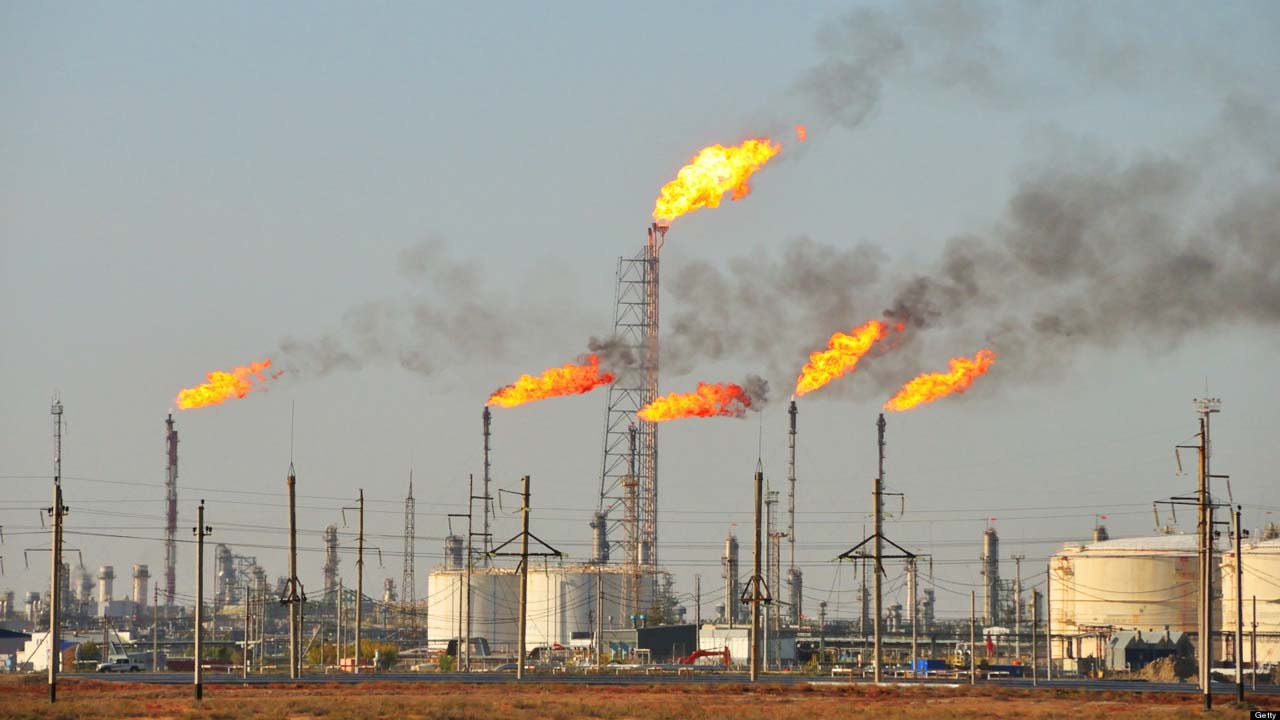Goal
- Replace and upgrade the existing integrated control and safety systems
- Achieve “first oil” on time in order to avoid contract penalties and lost production
- Maximize the availability/uptime of the control and safety systems and minimize the total cost of ownership
Challenges
- The project teams were located in multiple locations: The Netherlands, Slovakia, Germany, and Singapore
- Process data from the new integrated control and safety system (ICSS), including serial interfaces, safety systems, and new I/Os, were available only in the very late stages before the planned factory acceptance test (FAT)
- The original DCS had to be kept operational as long as possible and the existing safety systems had to remain operational with just a few hours available to upgrade
Solutions
- Foxboro™ (DCS)
- Triconex™ Tricon™ triple redundant safety system
- Triconex Trident™ safety system
- Wonderware™ Historian
- Foxboro Measurement and Instruments
Results
- After replacing the Emerson ProVox and Delta V DCS systems and implementing a new integrated control and safety system on the Glas Dowr, Bluewater was able to successfully meet first oil date on time
- Bluewater and its customers can now monitor the control and safety systems, both on- and offshore, in real time
Founded in 1978, Bluewater Energy Services B.V. (Bluewater) is a specialist in the design, development, leasing, and operation of tanker-based production and storage systems, as well as innovative mooring and transfer systems for the oil & gas industry. Bluewater operates worldwide from offices in the Netherlands, U.K., U.S., Nigeria, Malaysia, China, Angola, and Russia. The company currently owns and operates a number of floating production storage and offloading (FPSO) vessels, including the Glas Dowr.
The Glas Dowr is an FPSO vessel that is designed, built, and operated by Bluewater. The function of an FPSO is to safely convey produced hydrocarbons from wellheads to a production vessel, and from floating storage platforms to export tankers. The Glas Dowr commenced its first operations in August 1997 on the Durward & Dauntless Field (UKCS) for Amerada Hess. After 2000, the Glas Dowr moved from the U.K. to South Africa where it operated on the Sable Field for Soker E&P from 2003 to 2008.
More recently, Bluewater completed the conversion of the Glas Dowr at the Sembawang shipyard in Singapore to prepare the FPSO for operations on the Kitan Field. It left Singapore in June 2011 and arrived at the Kitan Field in early July 2011. The Kitan Field is located some 500 km off the Australian coast in an area of the Timor Sea. After completion of the subsea infrastructure, “First Oil” was achieved on October 14, 2011. Glas Dowr operates on behalf of ENI JPDA. For oil companies, operators, and contractors, achieving first oil on time is absolutely critical to subsea oil drilling projects. Any delays here can result in very costly penalties and lost production. Therefore any projects that involve the upgrade or replacement of existing FPSO control and safety systems are critical in terms of their scheduling and project management. As Ernest Hofstee, senior project manager at Bluewater, confirms: With a deck area of 740 m2, the Glas Dowr has a processing capacity (fluids) of 70,000 barrels per day, and a crude oil storage capacity of 104,500 m3. The vessel is powered
by 4 x 4.7 megawatts (MW) gas turbines and a 6.3 MW diesel generator. The Glas Dowr’s main functions are the receipt and control of fluids from subsea wells; processing of the incoming fluids for separation into crude, water, and gas; storage of the stabilized crude oil and maintaining it at the required temperature; treatment of effluent for discharge of water to the sea; chemical injection; provision of water injection facilities; offloading of crude into “tandem moored” shuttle tankers; and power generation for process, gas export, offloading, and utilities. The vessel and its functions are therefore absolutely critical to first oil. In fact, all systems on the Glas Dowr are designed for a minimum annual average production uptime of 95%. From April 2010 to March 2011, Schneider Electric successfully completed the project that involved the upgrade and implementation of a new ICSS for the Glas Dowr. This project was completed on time, within budget, and to specification.
Existing ICS
Prior to implementing the new Schneider Electric ICSS solution, the Glas Dowr’s existing ICS was based on Emerson’s ProVox system and Delta V DCS. The emergency shutdown and fire & gas logic solvers were based on a Triconex Tricon system. As Robert Stank, project manager at Schneider Electric in the Netherlands, states, “The Emerson DCS system was nearing the end of its useful life and so could not be expanded with new controllers or I/Os. The existing installed control systems were becoming obsolete and many items of hardware were in need of repair or just hadn’t been used for a long time. In addition, the existing cross-wiring and cabling was a point of genuine concern for Bluewater. We therefore proposed a new ICSS solution that involved the complete upgrade and replacement of DCS hardware and application migration of the existing ICS. This work involved installing around 2,000 hardwired I/Os and 7,000 serial I/Os.”
“Change the game” approach
Ronald Molenbroek, sales account manager at Schneider Electric, was also a key member of the project delivery team. “Bluewater was looking for an automation partner that could help it realize the critical Glas Dowr project within time and to budget, particularly with regards to achieving first oil on schedule. They required a full replacement solution with a proven low total cost of ownership but that also offered high system availability.
“We therefore took a project-based approach, which involved working very closely with Bluewater rather than with an engineering, procurement, and construction management contractor. Project requirements for both parties were very open, transparent, and clear. We ensured that the customer knew exactly what they were going to receive from us and when, as well as what we expected of the customer.”
Or, as Stank puts it: “Collaboration, cooperation, and openness were absolutely critical factors to the success of this project. All parties had the same goals and objectives. Lead engineers and technicians from Schneider Electric and Bluewater sat together in the same locations, which meant very fast responses to queries and any issues were resolved quickly. Weekly progress meetings — in which the teams took a ‘no topic is taboo’ approach — and detailed regular reporting throughout the course of the project were equally important. I would say that this genuine partnership approach and positive working environment were key ingredients in the successful delivery of this project.”
Schneider Electric Lead Engineer Roel Olieman adds, “Our focus was much more about meeting the needs of the management team at Bluewater, particularly in terms of planning, budgets, and risk sharing. Schneider Electric acted as a true partner rather than as an automation supplier. We referred to this as our ‘change the game’ approach.”
“We used an open, common working environment during the project. Bluewater, Schneider Electric, and subvendor personnel all used Microsoft® Sharepoint technologies for data exchange and for recording and tracking any issues on the project, which further supported our collaborative approach,” adds Stank. “Our project team was involved very early on in the pre-order phase, which helped to ensure buy-in of the project team after the order was awarded and guaranteed a seamless transfer from sales to the project delivery team.”
New ICSS solution: Complete Upgrade and Replacement
The new ICSS solution from Schneider Electric involved the upgrade and replacement of all obsolete control and safety systems on the Glas Dowr, including hardware and application migration. The scope of services provided by Schneider Electric included project management, detailed system engineering and design, supervision of installation, FAT and site acceptance testing, commissioning, and training.
The new fully integrated solution from Schneider Electric comprised a number of solutions from its comprehensive portfolio: Foxboro DCS, Trident Safety System, Tricon Safety System, Foxboro instrumentation (including level, pressure, flow, and temperature sensors), and Wonderware historian.
The legacy DCS hardware was replaced completely with a new Foxboro DCS. Schneider Electric replaced a number of systems including I/O and marshalling cabinets, PLCs, multi-core cabling, control cabinets, control processors, redundant control network infrastructure (copper and fiber optic), operator workstations and consoles, application engineering servers, printers, data logging PCs, and a complete revamp of the ship’s central control room.
“We also improved the reliability and stability of communications by replacing the vessel’s existing infrastructure with a new one based on a redundant, fault-tolerant switched fiber optic network, which would help to keep system availability high at all times,” explains Olieman. Wonderware Historian is also part of the solution at Bluewater. The historian system combines the power and flexibility of a relational database with the speed and compression of a true process historian.
Wonderware Historian is designed to collect a wide variety of plant or vessel data at full resolution and very high data rates, ensuring that decision-makers at all levels will have the historical information they need at all times.
“In terms of the Glas Dowr, Wonderware Historian is being used to generate reports on a frequent basis, for example, daily or weekly, which, if required, can then be exported to onshore personnel for further analysis. This can include sets of data on key performance indicators such as temperatures and volumes of crude oil or other critical downhole production data,” explains EEC technical lead Martin Forro.
The existing emergency shutdown and fire & gas systems on the Glas Dowr were upgraded with new I/O firmware in order to extend their lifetime and to comply with IEC 61508 regulations. Schneider Electric upgraded the existing Triconex Tricon fire & gas system with new I/O firmware, main processors, cards, and communication modules. The existing addressable fire detection system was replaced with a new central fire system and detectors. For this, the Tricon range of fault-tolerant safety controllers and Trident triple modular redundant safety controllers were installed.
According to Stank, Schneider Electric overcame a number of project execution challenges by using its “change the game” approach. “Despite a very tight schedule, a fixed budget with little room for changes, and a constantly evolving scope of work, we successfully implemented the ICSS for Bluewater in readiness for first oil. This was particularly impressive when you consider that process data from the new ICSS, including serial interfaces, safety systems, and new I/Os, were only available in the very late stages before FAT. We had to keep the original DCS ‘alive’ as long as possible and the existing safety systems had to remain operational with just a few hours’ window being available for the upgrade.”
According to Hofstee, there were other success factors too, including the early engagement of Schneider Electric during Bluewater’s front-end design activities, in which the project scope, schedule, and execution plan were finalized. This also included the early engagement of eReM, a company contracted by Schneider Electric to carry out manufacturing, demolition, and installation work on the project. “The execution of demolition and installation activities in the shipyard in Singapore was carried out by Schneider Electric and eReM personnel with no shipyard staff involved, which avoided lost time due to knowledge transfer,” said Hofstee.
Another key success factor was involving the people who would operate the new ICSS systems at the development and testing stages in the project. According to Hofstee, “If you involve the operators early on in the project, the buy-in later is much better and you don’t get as much resistance to use the new systems.”





